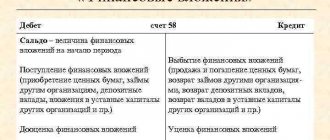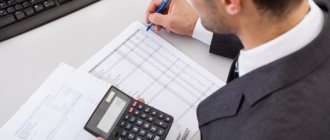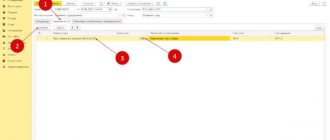Principle of working with score 08
According to Order No. 94n, to form the initial cost of a non-current asset, it is necessary to use accounting account 08.
This account allows you to accumulate all the costs that were associated with the creation, acquisition and development of new property of the institution. Costs can be grouped into five main sections:
- Fixed assets of the organization. Such objects include not only fixed assets on which depreciation is charged (buildings, transport, equipment), but also non-depreciable assets. Which? For example, land plots, subsoil.
- Intangible assets of an enterprise (patents, rights, intellectual property, all types of assets that do not have a physical shell, but generate profit and are used in business for more than 12 months).
- R&D results (relevant for research activities).
- Increasing the number of livestock (for agricultural enterprises).
- Development of natural resources. For example, which ones? Non-current exploration assets, exploration and exploration activities of the mining industry).
The first two groups are used almost everywhere, since fixed assets and intangible property are objects without which an economic entity will not be able to conduct its activities or it will be significantly difficult. The other three groups are less common. They are relevant for narrow specializations and types of economic activity.
Subaccounts 08 accounts
The current accounting regulations provide for the opening of additional sub-accounts, which will allow for more detailed systematization and structuring of information on investments in non-current assets of the enterprise.
You can open separate sub-accounts for account 08 “Investments in non-current assets”.
| Number and name of the subaccount to account 08 | What do we include in the calculation? |
| 08-01 “Purchase of land” | We reflect the costs of the enterprise associated with the acquisition of land plots. |
| 08-02 “Purchase of natural resources” | We generate information on the acquisition of environmental management facilities, with the exception of land plots. |
| 08-03 “Construction of fixed assets” | On account 08-03 we accumulate information about the costs of an economic entity for the construction of fixed assets. |
| 08-04 “Acquisition of fixed assets” | We summarize the costs and expenses of the enterprise aimed at purchasing buildings, structures, equipment, transport and other fixed assets. |
| 08-05 “Acquisition of intangible assets” | We record information about the company’s expenses on the purchase of intangible property. |
| 08-06 “Transfer of young animals to the main herd” | Declaration of costs for raising young productive and working livestock in the organization, transferred to the main herd. |
| 08-07 “Acquisition of adult animals” | We reflect the cost of adult and working livestock purchased for the main herd. We also include expenses for shipping animals. |
| 08-08 “Performing research, development and technological work”, etc. | We reflect information on the expenses of an economic entity for conducting R&D activities and other types of technological research, research and development. |
The organization independently decides whether to open additional subaccounts or not. This decision must be justified in accounting policies. But maintaining separate analytics in the context of fixed assets and intangible property is mandatory.
Debit 01 credit 01 means...
Dt 01 Kt 01 means write-off of fixed assets, and an additional subaccount “Disposal” is introduced. Let's consider the main reasons for disposal (alienation) of fixed assets, recorded in accounting by entry Dt 01 Kt 01 :
- disaster;
- sale;
- transfer as a contribution to the management company of another company;
- donation;
- liquidation.
- OS sales
When selling fixed assets, it is necessary to take into account revenue, depreciation and expenses incurred during the sale process.
Example
Leader LLC decided to sell equipment worth RUB 535,000. Let's see how the posting Dt 01 Kt 01 in the context of subaccounts.
| Debit | Credit | Amount, rub. | Content |
| 01/disposal | 01.1 | 535 000 | Transfer (disposal) of fixed assets |
| 62 | 91 | 535 000 | OS implementation |
When selling OS, it is necessary to calculate VAT.
| Debit | Credit | Amount, rub. | Calculation | Content |
| 91 | 68 | 96 300 | 535 000 × 18% | Transfer (disposal) of fixed assets |
The expected lifespan of the equipment is 10 years. Annual depreciation—RUB 53,500. The equipment served the company for 7 years.
| Debit | Credit | Amount, rub. | Calculation | Content |
| 02 | 01/disposal | 374 500 | 53 500 × 7 | Depreciation written off |
The discrepancy between the selling price and calculated depreciation is recorded on account 91.
| Debit | Credit | Amount, rub. | Calculation | Content |
| 91 | 01.2 | 160 500 | 535 000 – 374 500 | Residual value written off |
To deliver the OS to another city, an agreement was concluded with RUB 38,500. (including VAT RUB 5,872.88).
| Debit | Credit | Amount, rub. | Content |
| 23 (25,26…) | 60 | 32 627,12 | |
| 19 | 60 | 5 872,88 | VAT |
| 91 | 23 (25,26…) | 32 627,12 | Shipping costs written off |
- Transfer to the management company of another company
In this case, the price of the OS is agreed upon by the founders. Posting Dt 01 Kt 01 in terms of subaccounts will look similar to the situation with the sale.
| Debit | Credit | Content |
| 01/disposal | 01.1 | Transfer (disposal) of fixed assets |
| 02 | 01/disposal | Write-off of depreciation |
- Donation
The final price of the fixed assets and the costs received as a result of the donation are taken into account in the group of operating expenses.
Postings:
| Debit | Credit | Content |
| 01/disposal | 01.1 | Transfer (disposal) of fixed assets |
| 02 | 01/disposal | Write-off of depreciation |
| 91 | 01/disposal | The final price of the OS has been written off |
| 91 | 68 | VAT charged |
- Liquidation
Liquidation of OS must be economically justified. Therefore, it is worth paying special attention to the documentation that is signed by a specially convened commission.
Read about the specifics of drawing up an act in form OS-4 in the article “Unified Form No. OS-4 - Act on the write-off of an asset”.
Postings:
| Debit | Credit | Content |
| 01/disposal | 01.1 | Transfer (disposal) of fixed assets |
| 02 | 01/disposal | Write-off of depreciation |
| 91 | 01/disposal | The final price of the OS has been written off |
| 10 | 91 | Materials have been capitalized |
Thus, the entry Dt 01 Kt 01 using the “Disposal” subaccount is recorded each time there is a disposal (alienation, write-off) of fixed assets.
Methods of receiving property
The volume of non-current assets of an enterprise is characterized not only by the property status of the economic entity, but is also used to analyze production capacity, profitability and financial stability in general. Consequently, the organization is directly interested in strengthening and expanding its property base. Moreover, acquiring property yourself is not the only way to strengthen logistics.
The following methods of receiving property are distinguished:
- purchase or acquisition;
- free admission;
- creation in-house;
- creation by third parties;
- mixed method.
Depending on the method of receipt of the asset, the composition of costs included in the initial cost of the property is determined.
Formation of initial cost
The procedure for forming the initial cost of an asset is a list of costs, which is reflected in account 08 in accounting. The current PBU standards determine a specific list of institution costs that can be included in the initial cost of an asset. That is, they are reflected on account 08. The composition of such costs depends on the method of receipt of the asset into the ownership of the organization.
Here is a general list of the enterprise’s expenses for the receipt of property, which is taken into account in account 08 in accounting:
- The accounting value of an asset (property, fixed assets, intangible assets, R&D objects), that is, the price that was directly transferred to the seller. Including customs duties, commission fees, taxes owed and extra charges included in the price and paid to the seller. VAT and other non-refundable taxes are also included. The amounts of refundable deductions, tax bonuses and benefits should be deducted from the price when determining the initial cost.
- The fair value of the asset as of the date of its receipt in the event of a gratuitous transfer of property into the ownership of an economic entity. For example, receipt of fixed assets from the founder or investor.
- Other expenses associated with the acquisition, creation, development of a new facility (transportation, installation, consultations, etc.).
Including:
- expenses for remuneration of personnel involved in the creation of property;
- insurance premiums accrued for wages;
- the cost of work to create assets, paid under contracts to third-party organizations, individual entrepreneurs and individuals (for example, remuneration under a construction contract);
- state duties and other payments to the budget related to the creation, acquisition or production of a non-current asset (SAI);
- payment of intermediary services paid to third parties;
- costs of shipment, transportation, delivery, assembly, preparation, installation and other actions to bring the SAI into a condition suitable for operation;
- expenses for carrying out control activities to verify the readiness and proper functioning of the SAI;
- payment for materials, components and raw materials used to create or manufacture the VOA;
- payment of interest on installment payments to pay the cost of the asset;
- information, consulting and other support services;
- other types of services related to the creation or acquisition of objects, for example, payment for state construction supervision.
These costs of the enterprise, and along with them the accounting value, are reflected in the debit of the account. That is, debit turnover forms the initial cost. Credit turnover is formed immediately at the time the asset is accepted for accounting or at the time it is sold by a third-party company. In other words, the initial cost of the property is written off to a corresponding accounting account. For example, on the account. 01 “Fixed assets” when accepting fixed assets for accounting.
Typical accounting entries
| Operation | Debit | Credit |
| Materials written off for construction or creation of an object | 08 | 10 |
| Reflects the cost of the property paid to the seller (price) | 60 | |
| Salaries and insurance premiums were accrued for employees involved in the creation of the facility | 70 69 | |
| OS object received free of charge | 98 | |
| Intangible assets received from the founder as a contribution to the authorized capital | 75 | |
| Depreciation of fixed assets used in the creation of property is reflected | 02 | |
| OS accepted for accounting | 01 | 08 |
| The intangible asset is accepted for accounting | 04 | |
| The property not accepted for accounting was sold by a third party | 91 | |
| The shortage of investments in non-current assets identified during an inventory audit is reflected | 94 |
Interaction with other accounting accounts
Account 08 is often used in the preparation of correspondence with separate accounting accounts. Let's consider controversial situations.
| Corresponding account | The essence of the operation |
| Account 07 “Equipment for installation” | Account 07 reflects information about the cost of equipment that cannot be operated without special installation or assembly work. To recognize such expenses as part of the initial cost of property, documentation is required. Form OS-15 or another format approved by the organization is used. Wiring:
|
| Account 20 "Main production" | Account 20 is used in correspondence with account 08 if the organization decided to use part of its independently produced products in its activities. Then the finished product at its actual cost is credited to account 08, from which the facility will be put into operation as a VOA produced in-house. Unfinished objects of the SAI for its own needs can be written off by reverse posting:
|
| Account 76 “Settlements with various debtors and creditors” | Used to reflect various types of costs that should be hidden in the original cost of the property. For example, make a wiring:
|
| Account 79 “Intra-economic settlements” | Use account. 79 to reflect calculations within the organization. For example, between structural divisions allocated to a separate independent balance sheet. Wiring:
Or:
|
| Account 94 “Shortages and losses from damage to valuables” | On the account 94 include losses and shortages in relation to property, regardless of the perpetrators. The postings are made in the following order:
|
Time consuming OS objects
The process of constructing a new production facility or reconstructing an old one can be quite lengthy, be carried out with a phased acceptance of work and include the costs of trial operation, which will be carried out until the design parameters of the work are achieved. The enterprise has the right to independently determine the moment the OS is ready for industrial use.
Reconstruction of production or construction of new technological capacities, as a rule, require very large costs and can only be carried out with the use of borrowed funds for their implementation. Interest on such targeted loans and borrowings will increase the accounting value of capital investments in these objects (Dt 08 Kt 66, 67).
If an organization has acquired land specifically for construction, then the formed value of the object may include land tax (Dt 08 Kt 68).
Depreciation of investments in SAI
The question of whether depreciation is calculated from the 08th account remains relevant to this day. Until the object is accepted for accounting, depreciation is not accrued. Why? In accordance with Instruction No. 94n, depreciation on fixed assets and intangible assets is accrued only from the month following the month in which the organization accepted the property for accounting. Consequently, depreciation cannot be charged on objects that are at the stage of investment in SAI.
After accepting the property for accounting, depreciation should be calculated using the method that was enshrined in the accounting policy of the institution.
Where is account 08 reflected in the balance sheet?
If at the end of the reporting period there is a debit balance on account 08, then this indicator should be included in the active part of the balance sheet. Account 08 in the balance sheet: which line we reflect on depends on the type of property. Table:
| Line | What should be done |
| Balance line 1110 | Reflect in the balance sheet field the debit balance of account 08 in relation to investments in intangible assets. |
| Line 1120 | Include information in the balance sheet on investments in R&D, listed in account 08 as a debit at the end of the reporting period. |
| Line 1130 | We reflect investments in the development of deposits, subsoil and other types of intangible exploration assets. |
| Line 1140 | We disclose information about investments in the development of deposits of a material nature (material exploration assets). |
| Line 1150 | Account balance 08 regarding investments in fixed assets. Include the debit balance in the appropriate line of the balance sheet. |
| Line 1190 | Include information about investments in assets not disclosed in the SAI grouping of the balance sheet. |
For example, if the debit balance is on OS, then reflect the amount of investments in SAI on line 1150 of the balance sheet. If the organization’s accounting records a debit balance for R&D objects, fill out line 1120 of the balance sheet. For investments in intangible property, enter the value of the debit balance in line 1110 of the balance sheet.
Consequences of incorrect use of wiring Dt 08 Kt 10, 60
When including the cost of materials and contractor services in the initial cost of assets, the legal validity of this action is checked.
Unlawful reflection (non-reflection) of expenses for materials and services of contractors in the initial cost of assets leads to distortion of data in accounting and tax reporting and becomes the reason for the accrual of penalties for non-payment (incomplete payment) of taxes.
| Operations | Dt | CT | Sum | Rationale | |
| BOO | WELL | ||||
| The initial cost of the warehouse store reflects the cost of drinking water | 08 | 10 | RUB 4,805.08 | contradicts clause 8 of PBU 6/01, clause 10 of PBU 14/2007 | contradicts subpara. 7 clause 1 art. 264 Tax Code of the Russian Federation |
| In the initial cost of the accounting program, the costs of its development | 08 | 10 | RUB 107,144.06 | contradicts clause 3 of PBU 14/2007, clause 5, clause 7, clause 18, clause 19 of PBU 10/99 | contradicts subpara. 26 clause 1 art. 264 Tax Code of the Russian Federation |
| Period | Cost of the store-warehouse, calculated in violation of the requirements of PBU and Tax Code of the Russian Federation, rub. | Cost of the accounting program, calculated according to the rules of PBU and Tax Code of the Russian Federation, rub. | ||||
| Initial | Depreciation | Residual | Initial | Depreciation | Residual | |
| 01.01. | 229 771,18 | 1 838,17 | 227 933,01 | 224 966,10 | 1 799,72 | 223 166,38 |
| 01.02. | 229 771,18 | 3 676,34 | 226 094,84 | 224 966,10 | 3 599,44 | 221 366,66 |
| 01.03. | 229 771,18 | 5 514,51 | 224 256,67 | 224 966,10 | 5 399,16 | 219 566,94 |
| 01.04. | 229 771,18 | 7 352,68 | 222 418,50 | 224 966,10 | 7 198,88 | 217 767,22 |
Calculation based on data with violations = (227,933.01 226,094.84 224,256.67 222,418.50) / 4 × 2.2% = 4,953.87 rubles.
Calculation based on correct data = (223,166.38 221,366.66 219,566.94 217,767.22) / 4 × 2.2% = 4,850.27 rubles.
The overstatement of the quarterly property tax amounted to 103.60 rubles. (on 2%).
The property tax calculated for the quarter is written off in the same reporting period as income tax expenses (subclause 1, clause 1, article 264 of the Tax Code of the Russian Federation). In the event of an erroneous calculation of the quarterly property tax, the amount of income tax expenses is overestimated by 103.60 rubles. and the amount of income tax is underestimated by 20.72 rubles. (103.60 × 20%).
IMPORTANT! The fine for non-payment (incomplete payment) is collected in the amount of 20% of the unpaid amount of tax (clause 1 of Article 122 of the Tax Code of the Russian Federation). In our case, it will be 4.14 rubles. (20.72 × 20%).
According to the accounting program adopted by Stroy Market LLC as an intangible asset (with an initial cost of 107,144.06 rubles), property tax is not calculated (clause 1 of Article 374 of the Tax Code of the Russian Federation). The cost of the program is written off by Stroy Market LLC through monthly depreciation deductions (clauses 23–33 PBU 14/2007, Article 253, Article 256, Article 259 of the Tax Code of the Russian Federation).
If the cost of the accounting program is correctly reflected:
- in accounting - reflected in deferred expenses, which during the period of use of the program are written off as basic expenses (clause 3 of PBU 14/2007, clause 5, clause 7, clause 18, clause 19 of PBU 10/99);
- in tax accounting - the full amount is included in other expenses (subclause 26, clause 1, article 264 of the Tax Code of the Russian Federation).
| Accounting and tax reporting data | Erroneous reflection of data, rub. | Correct reflection of data, rub. | Amount of distortions, rub. |
| Initial cost of intangible assets (accounting program) | 107 144,06 | 0,00 | 107 144,06 |
| Monthly depreciation amount | 2 232,17 | 0,00 | 2 232,17 |
| The amount of expenses for the reporting month in accounting | 2 232,17 | 2 232,17 | 0,00 |
| Amount of expenses for the reporting month in tax accounting | 2 232,17 | 107 144,06 | 104 911,89 |
IMPORTANT! If the tax is understated or any line-by-line data in the financial statements is distorted by more than 10%, officials are fined 5,000–10,000 rubles, and for repeated violations – 10,000–20,000 rubles. (clause 1 of article 15.11 of the Code of Administrative Offenses of the Russian Federation).









